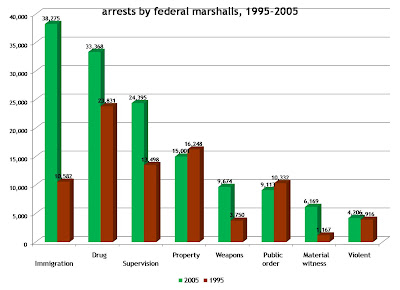usa today is reporting on a recent decline in the number of police officers killed in the line of duty. the data come from a new report by the national law enforcement officers memorial fund.
the site offered some intriguing state-by-state and historical data, as well as information about cause of death. i standardized the number of deaths by population and got the pattern below.
 if the data on the site are complete, police officer deaths don’t seem to track crime or incarceration all that closely — not at all what i expected. instead, deaths rise steadily from the civil war to about WWI, then increase very sharply to a peak in 1930. officer deaths decline dramatically during the depression years, then bob around before another run-up in the late 1960s/early 1970s.
if the data on the site are complete, police officer deaths don’t seem to track crime or incarceration all that closely — not at all what i expected. instead, deaths rise steadily from the civil war to about WWI, then increase very sharply to a peak in 1930. officer deaths decline dramatically during the depression years, then bob around before another run-up in the late 1960s/early 1970s.
since then, police work has become much less deadly — today’s rate is about one-fourth as high as the 1930 peak. assuming i’ve got the right population numbers in the denominator, it looks as though officer fatalities haven’t been this low since 1879. given this pattern, i suspect that the story is tied to the automobile in some important way. perhaps more officers were killed in accidents as they left foot patrol for squads, with those squad cars gradually growing safer since the 1930s.


 slaverymap.org
slaverymap.org

